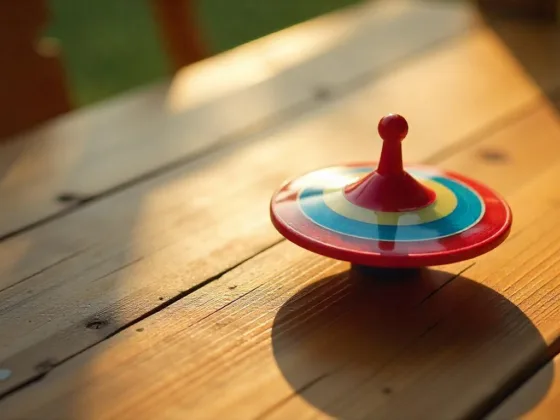Table of Contents Show
Building a loving and strong relationship with your pet is not only rewarding but also crucial for both your happiness and theirs. The key to this bond is effective training. Training helps teach good behaviors while building trust and communication. By using positive reinforcement and being consistent, you can create a space where your pet feels secure and understood.
In this article, we’ll explore methods to strengthen that bond, focusing on patience, socialization, and the joy of learning together.
Start with Positive Reinforcement
Positive reinforcement is one of the best tactics you can use when training your pet. This method involves rewarding your pet for behaving in a desirable way, which encourages them to repeat that behavior.
Here are some tips for using positive reinforcement effectively:
- Use rewards that motivate your pet: Whether it’s treats, praise, or extra playtime, make sure the rewards you use during training are things that your pet really enjoys.
- Be consistent with your rewards: Whenever your pet performs the desired behavior, make sure to reward them consistently. This will help them understand which actions are being reinforced.
- Keep training sessions short and fun: Pets have short attention spans, so it’s important to keep training sessions brief and enjoyable. This will prevent them from getting bored or frustrated.
The key to positive reinforcement is timing. Make sure to reward your pet immediately after they perform the desired behavior. This helps your pet associate the action with the reward and reinforces the learning process.
Over time, your pet will learn that certain actions lead to positive outcomes and they’ll be more likely to repeat those behaviors in the future.
Consistency is Key
Pets, especially dogs, are creatures of habit and thrive on routine and structure. When training your pet, it is always important to use the same commands, tone of voice, and rewards every time.
For instance, using “sit” and sometimes using “down” will mix up your pet. Inconsistent training can only delay the learning process and is likely to infuriate you and your pet. For example, if you reward bad behavior at times, it creates confusion.
Consistency helps your pet understand what is expected of them, and therefore they learn faster, while the bond between you and your pet becomes more stable.
Ensure all family members are participating in the training. If you allow the pet on the couch and another person doesn’t, the pet may have a hard time understanding the rule. If everyone is on the same page, then your pet will as well.
Set Realistic Expectations
Training takes time, and it’s important to have realistic expectations for both you and your pet. Here are some key points to keep in mind:
- Be patient: Not all pets learn at the same pace, and some behaviors may take longer to learn than others.
- Avoid frustration: Don’t expect your pet to master a command in just a few sessions. This can lead to frustration for both you and your pet, which can harm your relationship.
- Set small goals: Instead of focusing on the end result, set small, achievable goals for each training session. For example, when teaching your pet to stay, reward them for holding the position for a few seconds. Gradually increase the duration as you progress.
- Break it down: Breaking training down into smaller parts can help prevent overwhelm for both you and your pet.
- Celebrate progress: Celebrate every little achievement along the way. Reinforcing progress will motivate your pet to continue learning.
Remember, training is a journey that requires time and effort. By setting realistic expectations and celebrating small victories, you’ll create a positive learning environment for your pet.
Make Training Fun
Training your pet need not be a chore, but a fun activity to make both of you more willing to participate.
- Engage in Interactive Games: Engage your pet in some interactive games and activities that would excite him mentally and draw him closer to you. For instance, a play of fetch can reward and train your pet. It helps them associate fun with learning.
- Use Brain Games for Training: You can also use brain games for training. Give a try with puzzle toys or hide-and-seek games. They challenge your pet’s problem-solving skills. More fun means a more positive experience that your pet equates with training.
- Bonding Time Through Training: Training is bonding time when it’s done enthusiastically and patiently. Times spent together training, practicing a trick, or even just playing strengthen your bond with your pet. The time you spend with your pet is a sure way to create an atmosphere of mutual comfort, fun, and trust.
Bond Over Interactive Training
Pet training need not be a one-sided affair; it could also be a means through which to bond with your pet. The reason behind this can be that pet training encompasses building trust and communication, along with teaching certain skills.
Give your pet a lot of positive attention when training. Do this by speaking in a calm voice, making eye contact, and offering physical affection such as petting or scratching. This creates a sense of security and reinforces trust between the two of you.
If your pet feels loved and secure, then they will enjoy training. They look forward to the time they get to spend with you.
Patience is Key
Patience is perhaps the most important quality you can use when training your pet. Every pet learns at their own pace, and there will likely be frustrating moments along the way. Getting upset or rushing things will only hurt your relationship and make training harder instead of easier.
If your pet doesn’t respond right away, take a deep breath and give them time. It’s crucial to stay calm because pets can sense your emotions.
Being patient creates a comfortable environment for your pet to learn. Remember, training isn’t just about teaching commands; it’s about building trust. When you’re patient and supportive, your pet will trust you and be excited to learn more.
Socializing your pet is another important way to improve your relationship with them. It’s essential for your pet to experience new environments, meet different people, and interact with other animals.
1. Start Early
Start socializing your pet as early as possible, especially if you have a puppy. Introduce them to various experiences such as:
- Going on car rides
- Exploring different types of terrain
- Meeting other pets and people
2. Use Positive Reinforcement
During these socialization sessions, use positive reinforcement techniques to encourage your pet. This approach helps them associate new situations with positive experiences, building trust and confidence over time.
3. Reduce Fear and Anxiety
By consistently exposing your pet to new experiences and using positive reinforcement, you can help reduce fear and anxiety associated with unfamiliar situations.
4. Strengthen Your Bond
Effective training plays a crucial role in establishing a strong bond with your pet. The moments spent training together, filled with positivity, consistency, and patience, contribute to building trust and improving communication between you two.
Remember that every aspect of training is connected to creating a lasting bond with your pet. Just like how you’ve developed a close relationship with them over time, training also serves as an opportunity for growth in your connection.
Conclusion
Building a strong relationship with your pet through training yields immense rewards. This process corrects bad behaviors, fosters trust, and enhances communication.
Consistent use of positive reinforcement makes training enjoyable and effective. Be patient and set realistic goals, allowing your pet to learn at their own pace. Remember, training is not just about commands; it’s about deepening the bond you share.
Start training today, and watch your relationship flourish.
FAQs
The best way to train your pet and strengthen your bond is through positive reinforcement. This involves rewarding your pet for desired behaviors immediately, using treats, praise, or playtime, which helps them associate positive actions with good outcomes.
To ensure consistency in training, use the same commands, tone of voice, and rewards every time you interact with your pet. It’s also important that all family members are on the same page regarding rules and commands to prevent confusion for your pet.
If your pet isn’t learning as quickly as expected, it’s important to set realistic expectations. Training is a process that varies for each pet. Focus on small, attainable goals for each session and celebrate progress, no matter how small.
You can make training fun by incorporating interactive games and activities that engage your pet mentally. Activities like fetch, puzzle toys, or hide-and-seek can make training enjoyable, helping your pet to associate learning with fun experiences.
Patience is crucial in pet training because every pet learns at their own pace. Getting frustrated or rushing the process can harm the relationship and make training more difficult. A calm and patient approach creates a comfortable environment for your pet to learn effectively.
Socialization helps improve your relationship with your pet by exposing them to new experiences, people, and environments. Early and positive exposure reduces fear and anxiety, builds trust, and helps your pet feel more confident in various situations, thereby strengthening your bond.










